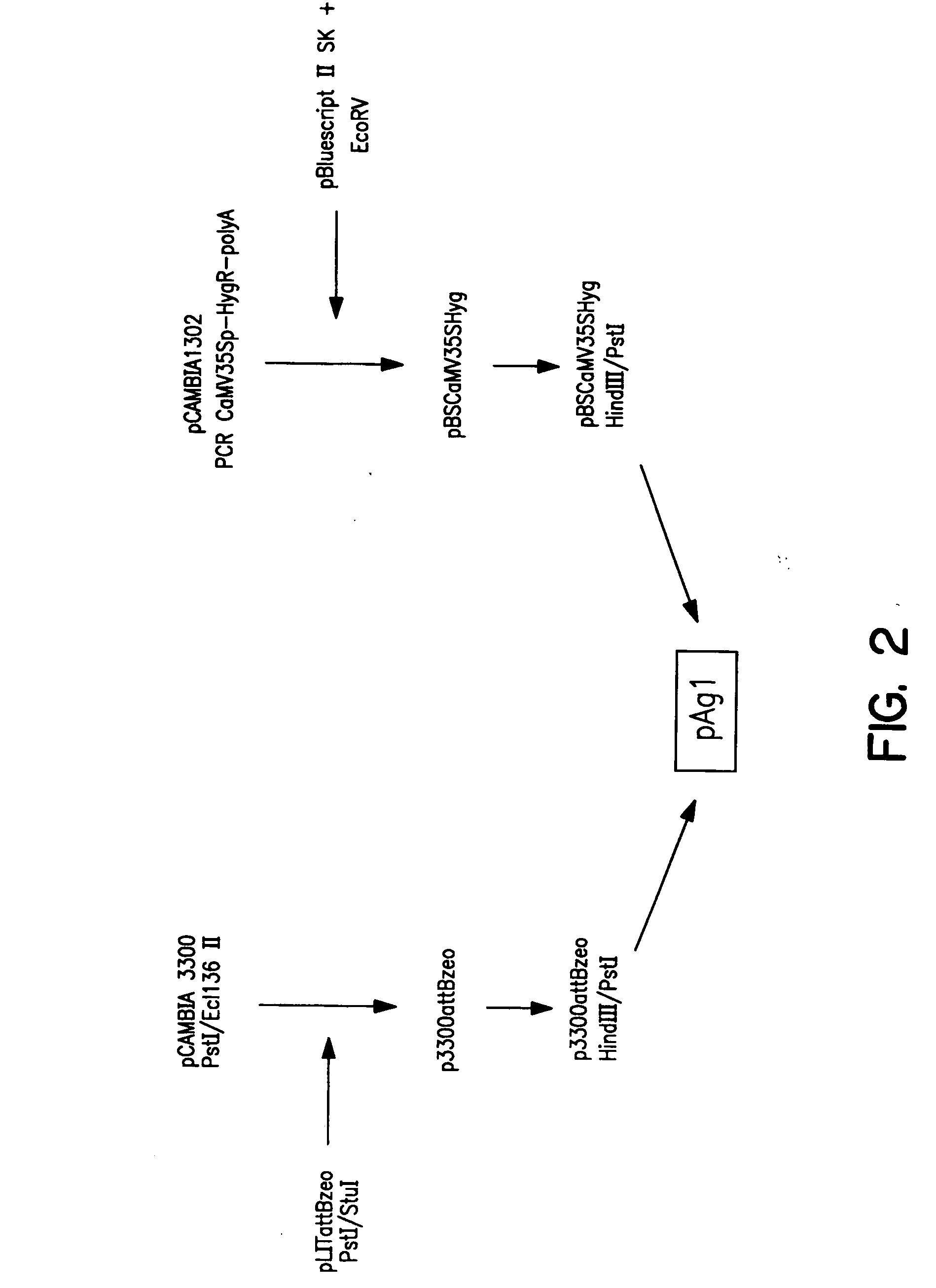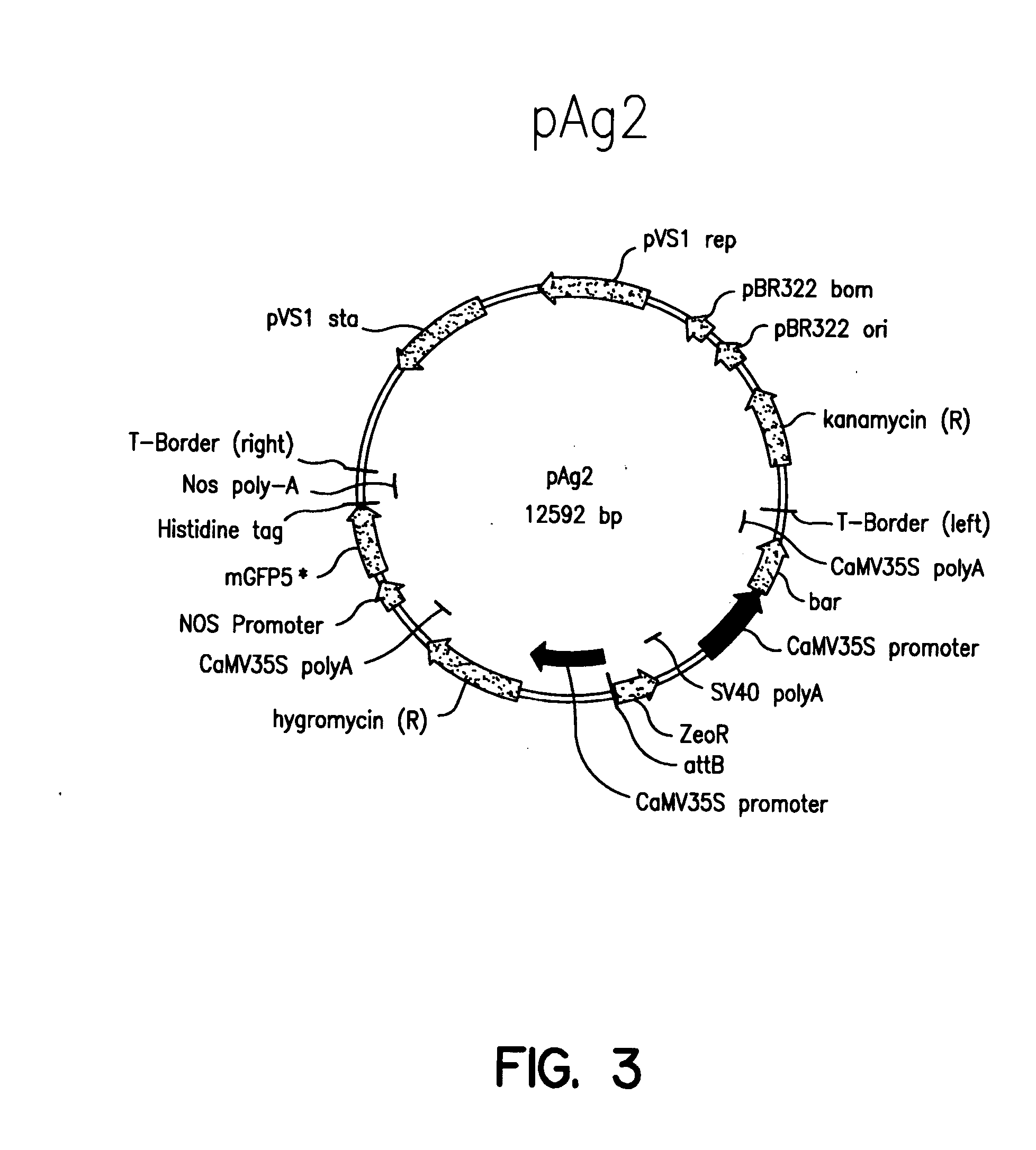Plant artificial chromosomes, uses thereof and methods of preparing plant artificial chromosomes
a technology of artificial chromosomes and plants, applied in the field of plant artificial chromosomes, can solve the problems of limiting the size of heterologous dna that can be transferred using these methods, limiting their utility, and many limitations, so as to facilitate amplification or effect targeting, the effect of facilitating amplification of a region
- Summary
- Abstract
- Description
- Claims
- Application Information
AI Technical Summary
Benefits of technology
Problems solved by technology
Method used
Image
Examples
example 1
Generation of Arabidopsis protoplasts
[0467] Plant protoplasts are typically generated from plant cells following standard techniques (for example, Maheshwari et al., Crit. Rev. Plant Sci. 14:149-178, 1995; Ramulu et al., Methods in Molecular Biology 111 227-242, 1999). Typically plant protoplasts are prepared from fresh plant tissue, e.g., leaf, or can be prepared by converting cell suspension cultures to protoplasts by removal of the cell walls enzymatically. For production of Arabidopsis protoplasts, the methods of Karesh et al. (Plant Cell Reports 9: 575-578, 1991) and Mathur et al. (Plant Cell Reports 14:21-226, 1995) were used to generate Arabidopsis suspension cultures by modifications thereof as described below. These cells were maintained in liquid culture and subcultured as required, usually between 7 and 10 days in culture.
[0468] Establishment of Suspension Cultures
[0469] Cell suspension cultures derived from root callus of Arabidopsis thaliana cv. Columbia, RLD and Lan...
example 2
Generation of Tobacco Mesophyll Protoplasts
[0472] Mesophyll protoplasts were generated from leaves of sterile plantlets of N. tabacum cv. Xanthi. The plantlets were grown aseptically on MSO medium (MS basal media, 3% sucrose, 0.05% morpholinoethanesulfonic acid (MES), 1.0 mg / l benzyl adenine (BA), 0.1 mg / l NAA and 0.8% agar, pH 5.8) at 22° C. under a 16 / 8 h photoperiod (see also Bilang et al. (1994) Plant Molecular Biology Manual A1:1-6). Fully expanded leaves (2×4 cm) were cut in half, the main vein removed and the upper epidermis scored with parallel cuts. Leaf pieces were immersed in 6 ml enzyme solution containing 1.2% Cellulase ‘Onozuka’ R-10 and 0.4% Macerozyme R-10 in K4 medium (Nagy and Maliga (1976) Z. Pflanzenpysiol. 78:453-455) and incubated at 22° C. for 15 h without shaking. The protoplasts were purified by pouring through a 100 μm nylon mesh sieve. Suspension of protoplasts was carefully overlayed with 1 ml W5 solution (Bilang et al. (1994) Plant Molecular Biology Man...
example 3
Production of Tobacco Protoplasts from Suspension Cultures
[0473] Tobacco BY-2 protoplasts are prepared from suspension cultures according to the method of Nagata et al. ((1981) Molecular and General Genetics, 184:161-165).
PUM
| Property | Measurement | Unit |
|---|---|---|
| melting temperatures | aaaaa | aaaaa |
| volume | aaaaa | aaaaa |
| pore size | aaaaa | aaaaa |
Abstract
Description
Claims
Application Information
 Login to View More
Login to View More - R&D
- Intellectual Property
- Life Sciences
- Materials
- Tech Scout
- Unparalleled Data Quality
- Higher Quality Content
- 60% Fewer Hallucinations
Browse by: Latest US Patents, China's latest patents, Technical Efficacy Thesaurus, Application Domain, Technology Topic, Popular Technical Reports.
© 2025 PatSnap. All rights reserved.Legal|Privacy policy|Modern Slavery Act Transparency Statement|Sitemap|About US| Contact US: help@patsnap.com



